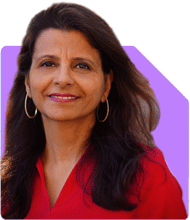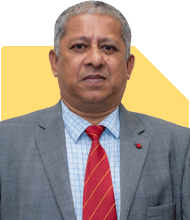Investing for Child's Education & Marriage: Seeking Advice on Portfolio
Ramalingam Kalirajan |10071 Answers |Ask -Follow
Mutual Funds, Financial Planning Expert - Answered on Nov 14, 2024
He has an MBA in finance from the University of Madras and is a certified financial planner.
He is the director and chief financial planner at Holistic Investment, a Chennai-based firm that offers financial planning and wealth management advice.... more

Hi sir Kindly review my portfolio.. Investing below amount in SIP 1)Large cap - Axis 4500 Nippon 4500 2) Flexi cap - Parag parikh - 3000 Icici - 2500 3) Mid cap - Motilal - 2500 Aditya birla - 500 Kotak - 500 4) Small cap Tata - 1500 My goal for investing is my child education, child marriage and Retirement funds I planning to invest for next 15 years Kindly suggest which and all mutual fund I have to continue and remove for better returns.. Thank you
Investment Goals and Approach
You have clear long-term objectives, which is ideal. Planning with specific goals like education, marriage, and retirement brings purpose to your investment journey. Given the 15-year investment horizon, you can take advantage of compounding benefits, especially with equity mutual funds. However, let’s ensure your portfolio is optimized for growth, risk, and tax efficiency.
Evaluating Your Mutual Fund Choices
Let’s look at your current investments across various categories:
1. Large Cap Funds
Large-cap funds provide stability, as they invest in established companies with relatively lower volatility. However, there can be limited scope for very high growth in large caps compared to mid or small caps.
You’re invested in two large-cap funds. It’s often advisable to focus on one high-performing large-cap fund to avoid overlap and unnecessary diversification.
Consider retaining a large-cap fund that has a consistent track record, active fund management, and strong research backing.
2. Flexi Cap Funds
Flexi-cap funds offer flexibility by investing across market caps. This allows the fund manager to capture growth opportunities in any segment of the market.
Holding two flexi-cap funds is fine, as it balances large and mid-cap stocks, offering both stability and growth. However, evaluate each fund’s performance and select one if you feel any duplication in returns.
3. Mid Cap Funds
Mid-cap funds offer growth potential but come with higher risk. Given your long-term horizon, they can be beneficial.
You currently have three mid-cap funds. It might be better to consolidate into one or two top-performing funds in this category to reduce excessive overlap and diversify across sectors rather than just fund names.
4. Small Cap Fund
Small-cap funds are suitable for aggressive growth but can be highly volatile. It’s wise to limit exposure to small caps, as they tend to fluctuate significantly, especially over shorter timeframes.
Given your portfolio composition, your allocation to small caps is moderate, which seems appropriate. However, ensure you are comfortable with the high-risk nature of small caps, especially if the market faces downturns.
Analysis of Direct vs. Regular Funds
Opting for direct funds might appear attractive due to lower expense ratios, but it’s crucial to weigh the potential downsides:
Lack of Guidance: Direct funds lack the guidance a Certified Financial Planner (CFP) can offer. Expert support ensures your portfolio is regularly rebalanced and aligned with market changes, personal goals, and tax updates.
Regular Tracking: With a CFP’s help, your investments are reviewed frequently, making timely adjustments in case of underperformance. This hands-on approach is particularly helpful in achieving your long-term goals.
Tax Considerations: Regular funds through a CFP can help you optimize tax efficiency by offering proactive advice on capital gains, loss harvesting, and adjusting investments according to the new capital gains tax rules.
Importance of Actively Managed Funds
While index funds may seem attractive for their lower costs, actively managed funds bring added advantages, especially for long-term investors like you:
Potential for Higher Returns: Skilled fund managers actively seek growth opportunities that can outperform benchmarks over time. This could be a significant advantage given your long-term goals.
Flexibility in Market Movements: Active funds allow managers to make informed changes, adapting to market conditions and potentially protecting your investments during volatile phases.
Diverse Exposure: With active management, your funds are better diversified across sectors and stocks, reducing concentration risk and enhancing the potential for stable returns.
Investment Strategy Recommendations
Considering your goals and time horizon, here’s a comprehensive approach to optimize your portfolio:
Consolidate Fund Choices: Consider reducing similar funds within each category. This will provide clarity and focus, making it easier to track progress and reduce management complexity.
Review and Rebalance: Regularly review your portfolio performance, preferably with a CFP, to ensure each fund aligns with your risk tolerance and goals. Aim for annual rebalancing to stay on track.
Allocate Based on Goals: Assign specific funds for each goal. For example:
Child’s Education and Marriage: Given the moderate-to-high timeframe, allocate funds with a mix of stability (large-cap and flexi-cap funds) and growth (mid-cap).
Retirement: Invest in a diversified mix of flexi-cap and large-cap funds, along with a smaller allocation to mid-caps, as retirement is a long-term goal with a potentially higher investment horizon.
Avoid Overlapping: Limit overlap between funds by choosing those with unique holdings or management strategies. Too many funds can dilute returns, especially if they invest in similar stocks.
Tax Considerations
With recent changes in capital gains tax rules, be mindful of the following when planning exits or rebalancing:
Equity Mutual Funds: Long-term capital gains (LTCG) above Rs 1.25 lakh are now taxed at 12.5%. Short-term capital gains (STCG) are taxed at 20%.
Debt Funds: LTCG and STCG for debt funds are taxed according to your income tax slab.
Tax Efficiency: To minimize tax outgo, hold investments for the long term and consult a CFP for tax-optimized rebalancing.
Investment Horizon: Sticking to your 15-year investment plan can help mitigate tax impacts and optimize returns.
Insurance Evaluation
If you hold any LIC, ULIP, or investment-linked insurance policies, review their performance and fees. These products often come with high costs, which can limit returns. Consider surrendering such policies if they don’t align with your goals and reinvest in well-performing mutual funds instead.
Finally
Your commitment to a 15-year SIP plan shows your dedication to securing your family’s future. A structured, diversified approach with periodic reviews can enhance your portfolio’s performance, aligning it with your goals of education, marriage, and retirement.
A Certified Financial Planner can be a valuable partner in this journey, providing expert advice to help you make the most of your investments and adjust them as needed.
Best Regards,
K. Ramalingam, MBA, CFP
Chief Financial Planner
www.holisticinvestment.in
https://www.youtube.com/@HolisticInvestment
You may like to see similar questions and answers below
Omkeshwar Singh | Answer |Ask -Follow
Head, Rank MF - Answered on Sep 09, 2020
Omkeshwar Singh | Answer |Ask -Follow
Head, Rank MF - Answered on Mar 17, 2020
Ramalingam Kalirajan |10071 Answers |Ask -Follow
Mutual Funds, Financial Planning Expert - Answered on Apr 22, 2024
Ramalingam Kalirajan |10071 Answers |Ask -Follow
Mutual Funds, Financial Planning Expert - Answered on May 09, 2024
Ramalingam Kalirajan |10071 Answers |Ask -Follow
Mutual Funds, Financial Planning Expert - Answered on Nov 08, 2024
Komal Jethmalani |410 Answers |Ask -Follow
Dietician, Diabetes Expert - Answered on Aug 02, 2025
Prof Suvasish Mukhopadhyay |2744 Answers |Ask -Follow
Career Counsellor - Answered on Aug 02, 2025
Prof Suvasish Mukhopadhyay |2744 Answers |Ask -Follow
Career Counsellor - Answered on Aug 02, 2025
Dr Nagarajan J S K |2129 Answers |Ask -Follow
NEET, Medical, Pharmacy Careers - Answered on Aug 01, 2025
Dr Nagarajan J S K |2129 Answers |Ask -Follow
NEET, Medical, Pharmacy Careers - Answered on Aug 01, 2025
Dr Nagarajan J S K |2129 Answers |Ask -Follow
NEET, Medical, Pharmacy Careers - Answered on Aug 01, 2025
Radheshyam Zanwar |6064 Answers |Ask -Follow
MHT-CET, IIT-JEE, NEET-UG Expert - Answered on Aug 01, 2025
Dr Nagarajan J S K |2129 Answers |Ask -Follow
NEET, Medical, Pharmacy Careers - Answered on Aug 01, 2025
Ramalingam Kalirajan |10071 Answers |Ask -Follow
Mutual Funds, Financial Planning Expert - Answered on Aug 01, 2025
Ramalingam Kalirajan |10071 Answers |Ask -Follow
Mutual Funds, Financial Planning Expert - Answered on Aug 01, 2025
























